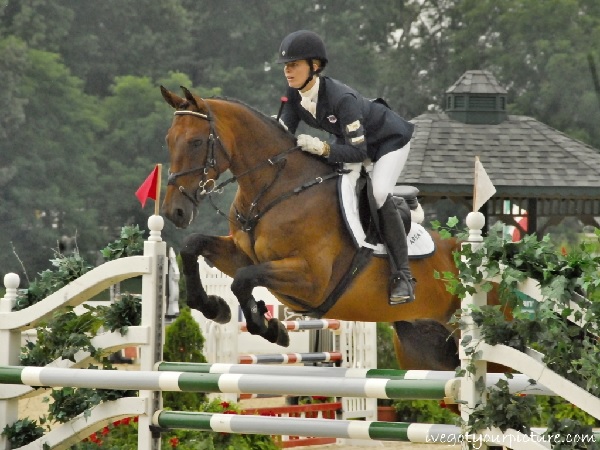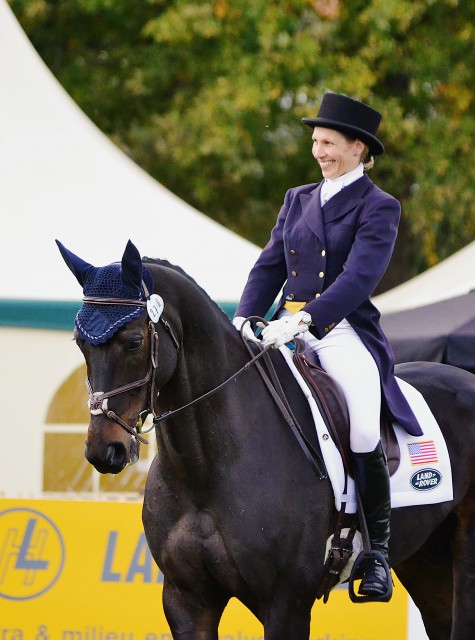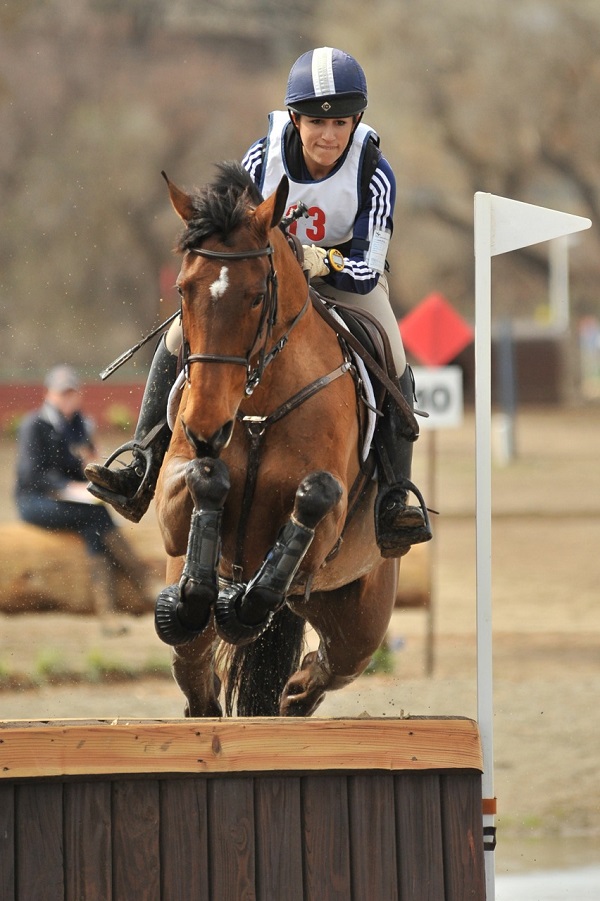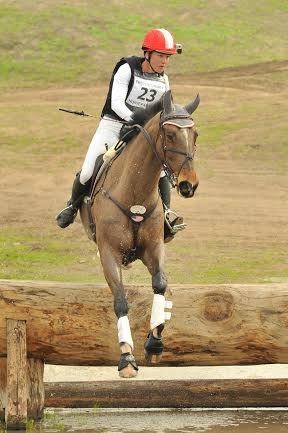 Future Event Horse Seminar. Photo by Ivegotyourpicture.com.
Future Event Horse Seminar. Photo by Ivegotyourpicture.com.
I had great fortune to attend the USEA’s Future Event Horse (FEH) and Young Event Horse educational seminar in Ocala, FL. The first day’s session concentrated on conformation and movement, with judging and evaluation of the FEH participants on the triangle, and a few young event horses under saddle on the flat (4-5 year olds). Susan Graham-White led the discussion for the YEH, while Marilyn Payne controlled the dressage portion. Robin Walker and Maren Engelhardt also offered their professional critique and thoughtful opinions based on their own experience. I volunteered with two demo horses, a yearling colt and a three-year-old filly.
I was super impressed with all the judges’ comments and clear, logical reasoning. Prior to today, I was familiar with the Young Event Horse program, having participated in several events. However, the Future Event Horse session was new for me; I have been skeptical about the merits of competitively evaluating horses at yearling to three years old, and I feared that it would be more of a dressage beauty contest rather than honest assessment of an upper level event prospect. I couldn’t have been more wrong!
While movement at the walk and trot was dissected for each baby horse, far more emphasis was placed on type, structural conformation, and overall impression with specific attention to the “three-phase athlete.” I was a little unsure how my Thoroughbred yearling colt would grade out; of course I think he’s pretty nice, but every breeder thinks that about their kids! I was very encouraged by Susan Graham-White’s comments on his exceptional type, overall balance, and well-matched proportions. Robin Walker and a few audience members noted that my colt is a bit light-boned and could have more substance; this is true, but Susan also pointed out that his frame matches his body-type, and he very well may develop more as he ages.
He scored extremely well on conformation and “foundation structure,” with very correct legs that was confirmed walking towards the judges. My colt was quite jazzed at his first field trip away from home, so it was difficult for him to show his best, relaxed walk and trot. This is quite normal for baby horses, and it was stressed that judges should pick out the best 4-5 strides the horse can give, and score that. At such a young age, perfect behavior is not required– find the horse’s true potential, the best he can do on that day, and reward that as much as possible.

Susan Graham-White and Robin Walker evaluate a yearling. Photo by Ivegotyourpicture.com.
The other two yearlings, a colt and a filly, were by Holsteiner stallions. The colt was an extremely loose, elastic horse, very stretchy all through his body. Maren warned that such looseness can have a limit, however, pointing out the horse’s longish weak pasterns that could pose a soundness concern later in his career. The filly was also an exceptional mover with a very lovely temperament, most everyone wanted to take her home!
I missed most of the two-year-old group as I swapped horses, so sadly I don’t have many comments there. The three-year-old group was quite interesting. The first horse presented was a big chestnut stallion with enormous presence. The judges and the audience were unanimously wowed with his type, earning a solid 9. There was little to criticize about his body from the side; his neck and shoulder were fabulous, matched by an equally powerful hind end. Unfortunately, his score went down a bit from his movement, as his left-front was a bit crooked. His trot showed a little tension (a stallion getting mildly distracted by two nearby fillies), but you could see he would look quite nice under saddle with proper training. He was possibly the nicest horse of the day.
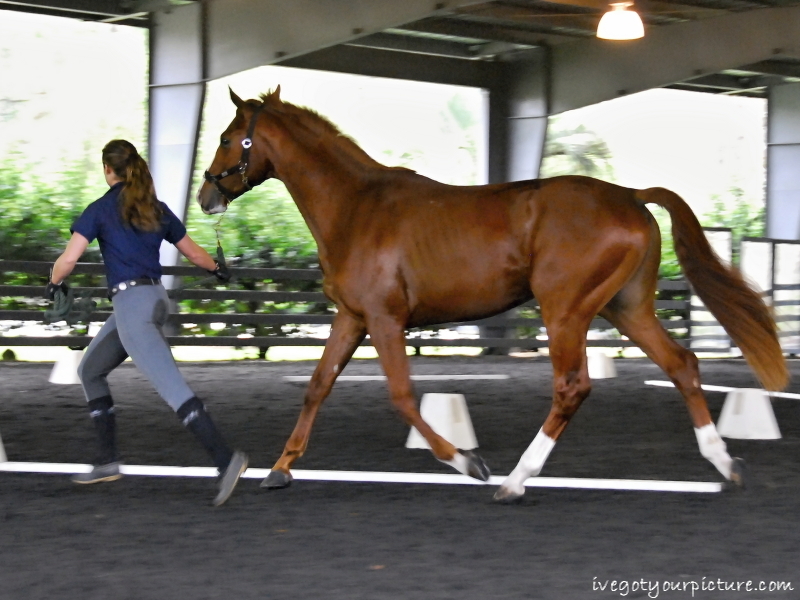
This 3-year-old chestnut stallion had tons of presence! Photo by Ivegotyourpicture.com
I presented my three-year-old filly next, “Valentine,” owned by Justice Farm. You know that moment when the rider in front of you lays down an unbeatable dressage test, and you have to follow it? That’s how I felt leading this filly up to the crowd. She’s a VERY fancy filly, but her breeding is unorthodox, and personally I don’t consider her a true upper level prospect. To my surprise, the judges loved her. Maren had many wonderful things to say about the filly’s frame, substance and type. She was impressed with the filly’s strength through the forearm, gaskin, and broad hindquarters. Maren was critical of the filly’s lower leg, which is a bit tied in below the knee. While at the halt Valentine appears correct, her slight toe-in is noticed at the walk. Where Valentine really turned heads was in her trot; she has a very floaty, ground-covering trot with excellent engagement of her hocks. The judges’ final impression was that she was a little bit downhill, but her movement and powerful hind end would allow her to overcome it.

Three-year-old Appendix filly, Valentine. Photo by Ivegotyourpicture.com.
And then I revealed Valentine’s pedigree: by an AQHA halter stallion, out of a Thoroughbred race mare. Eyes widened and mouths dropped in the audience, who all assumed they were watching a warmblood/TB cross. It was hard for me to keep from giggling. She’s a very nice horse, a genetic masterpiece from that mating (who would’ve thought?!) but personally I still question how far she’ll make it in the event world. She’s already under saddle, with incredibly smooth gaits, but she does ride a bit downhill at the canter. I spoke with Susan about this after the demo; she said that she’s known horses, particularly with such a nice hind end, that do overcome that with proper training. I’m still skeptical; I really don’t see how this horse would ever gallop for 10 minutes around a 3-star course, but perhaps the experts know something I don’t! Nonetheless, Valentine was bred to be a mid-level event/show horse for the Justice family daughters, and I’m sure she will be quite successful at that.
The final three-year-old in the group was also exceptionally nice. A very tall, leggy gray filly, she was a nice three-phase type who covered a lot of ground. Robin Walker suggested that her pasterns were close to being upright (though acceptable), and she was a little wasp-waisted, but that was pretty critical. She had a lovely mind, and was another horse many in the audience fell in love with. Overall, the group of Future Event Horses was outstanding and a great testament to American event breeders.

Photo by Ivegotyourpicture.com.
Marilyn Payne took over to introduce the dressage portion of the Young Event Horse Program. Like Susan Graham-White, Marilyn stressed that judges should look for the BEST potential in every horse presented. The YEH dressage test is not scored as a typical test; there are no points for each movement or transitions, only scores for each gait and overall impression. Marilyn said to make sure and evaluate the horse in both directions before coming to a final score; especially at the canter, almost all young horses will have a weak side, and it’s important to view their best effort before making a scoring decision. It was clear on a five-year-old ridden by Lauren Kieffer that the horse’s gaits and overall impression definitely improved by the end of the “test,” after asking for lengthening at trot and canter.

Lauren Kieffer rode a lovely five-year-old in the Young Event Horse dressage evaluation.
The horses’ submission is taken into account for the overall impression score. YEH judging really requires an experienced, thoughtful, observant judge to truly give a proper evaluation. It’s not unusual for a young horse to have moments of insubmission; but the judge must decide why it happened, and if it’s worth noting or not. A young horse bouncing sideways at a moving golf cart? No big deal. A four-year-old tossing his head because he lost his balance in a downward transition? That’s understandable.
From a rider’s perspective, it’s most important to show your horse off and ride him to his best. Too often, riders get caught up in Riding The Test and holding the horse in a frame to look nice (come on, we all do it!), but the horse’s gaits may suffer. Push the horse out and let him give his best gait, even if it means he loses his balance a little bit or can’t hold it for very long. Judges should reward those good strides that are shown, not penalize the horse for lack of perfection at this stage. However, pushing the horse doesn’t mean rushing– don’t run forward at all costs, as some horses need a slower tempo to show off their rhythm and swing through the back.
It was interesting to see how different judges (there were lots of dressage judges in attendance) had slightly different marks for each horse. They were mostly in the same range, though personal preferences could rate a gait higher or lower. The scoring is subjective, and judges do have to “place” the class, so some marks will be relative to horses seen earlier in the day. Judges shouldn’t be afraid to award high marks if they feel they are deserved.
The day wrapped up with a lecture and demonstration from David O’Connor on the event horse’s gallop. David stressed that there is a BIG difference between the 3-star horse and the 4-star horse; 10 minutes is manageable for a horse with a less-than-efficient gallop, but 11:30 can really wear out a horse with excess leg movement. David in particular referred to warmbloods (Holsteiner type, for example) who move wide behind with a lot of elevated hock action.
An efficient stride can really make a difference on the world’s toughest courses; he referred to a video of Donner at Rolex, where his gallop stride leaving the start box was exactly the same as when he crossed the finish line. He was still fresh enough to go around again! Other horses, David said, can improve their gallop from beginning to end. Manoir De Carneville doesn’t really hit his “stroke” until the four-to-seven minute mark on course; he moves a bit too up in the beginning, but then he flattens out and really covers the ground as he gets going. Compare that to Andrew Nicholson’s Quimbo, whose gallop really weakened by the end of the course at Rolex…and that’s with one of the best, most rhythmical cross-country riders in the world!
David said we really need to focus on the quality of the gallop — not just a 27-foot long stride, if it’s high and difficult to maintain over a long course. Neither do you want an overly short stride. Ideally, the horse should be light in front, skimming lightly across the ground, propelling himself forward as efficiently as possible. We watched several horses gallop a few circuits and tried to select our favorites. Most of them were better to the right, David noted — so be sure to view the gallop on both leads! The best horse was a beautiful leggy bay that moved a little overly high in front, but his hind end was fairly flat and swung through nicely. This would be a horse like Tate, who would improve and level out throughout the course. The horse also gave the impression he would be easy to balance before the fences, not super heavy on the forehand.

Best gallop of the day. Photo by Ivegotyourpicture.com.
Other horses perhaps needed to be trained to gallop differently — a little gray gelding ridden by Ellen Doughty improved greatly when he galloped round, low into the bridle. It allowed his shoulder to open up and out, rather than pounding the ground too vertically. It was very interesting to hear David’s thoughts on galloping– the Training Sessions are so focused on rideability, gymnastic work, and small details in performance, that truly stepping back and evaluating some horses’ raw gallop potential was a nice change.
Overall, I was extremely impressed with the seminar. It was well-organized, informative, with a very inviting feel for the audience. The panelists were clearly enthusiastic about their subject, and did an excellent job conveying their knowledge, skill, and experience. About 25 people attended, including some very notable breeders, judges, and competitors. I’m looking forward to the YEH jumping demonstration tomorrow.
-

-

-

-

-

-

-

-

-

-

-

-

-
Best gallop of the day. Photo by Ivegotyourpicture.com.
-

-
Lauren Kieffer rode a five-year-old in the Young Event Horse dressage evaluation.
-

-
Photo by Ivegotyourpicture.com.
-

-
Three-year-old filly, Valentine. Photo by Ivegotyourpicture.com.
-

-
A three-year-old chestnut stallion struts his stuff at a YEH Symposium. Photo by Ivegotyourpicture.com
-

-
Susan Graham-White and Robin Walker evaluate a yearling. Photo by Ivegotyourpicture.com.
-

-
Future Event Horse Seminar. Photo by Ivegotyourpicture.com.





